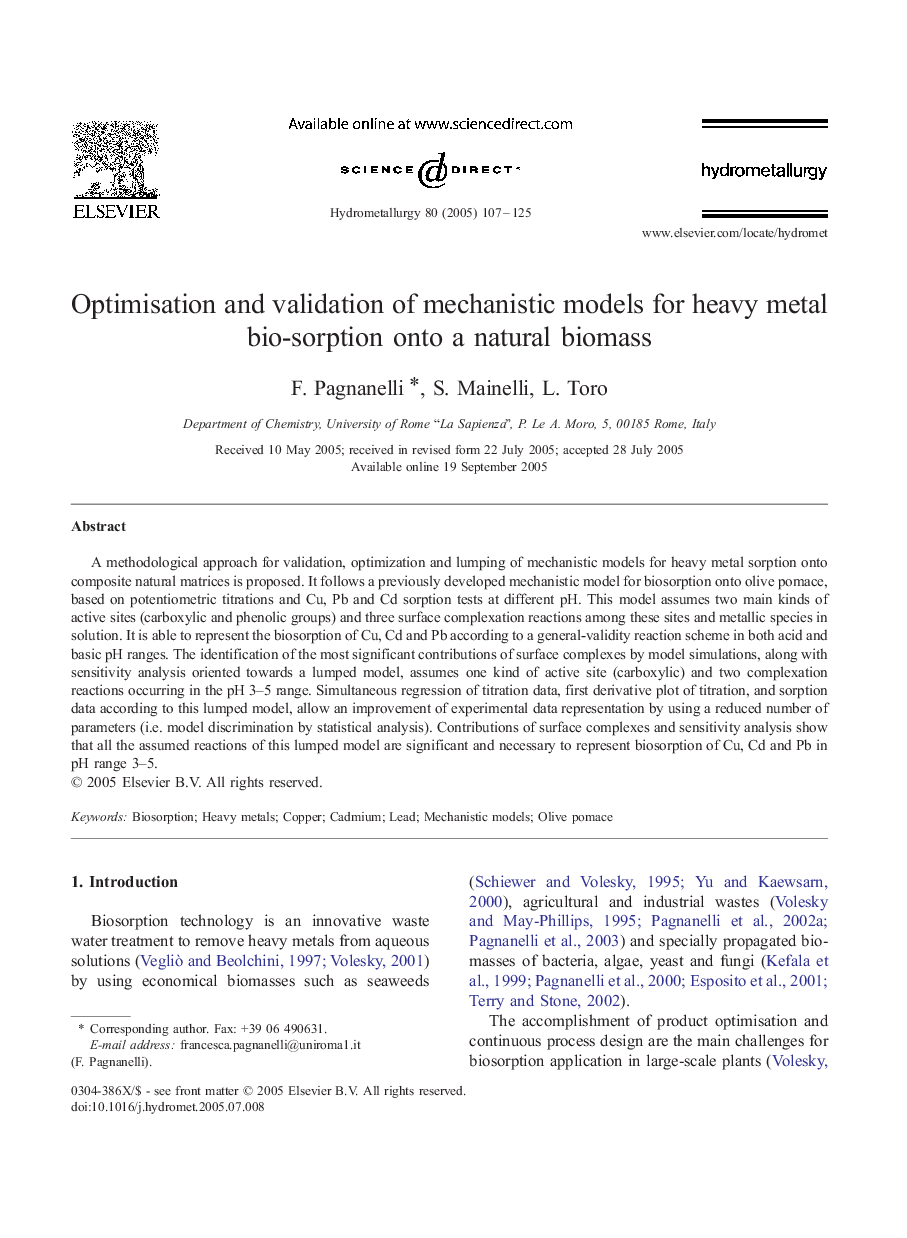| Article ID | Journal | Published Year | Pages | File Type |
|---|---|---|---|---|
| 9632507 | Hydrometallurgy | 2005 | 19 Pages |
Abstract
A methodological approach for validation, optimization and lumping of mechanistic models for heavy metal sorption onto composite natural matrices is proposed. It follows a previously developed mechanistic model for biosorption onto olive pomace, based on potentiometric titrations and Cu, Pb and Cd sorption tests at different pH. This model assumes two main kinds of active sites (carboxylic and phenolic groups) and three surface complexation reactions among these sites and metallic species in solution. It is able to represent the biosorption of Cu, Cd and Pb according to a general-validity reaction scheme in both acid and basic pH ranges. The identification of the most significant contributions of surface complexes by model simulations, along with sensitivity analysis oriented towards a lumped model, assumes one kind of active site (carboxylic) and two complexation reactions occurring in the pH 3-5 range. Simultaneous regression of titration data, first derivative plot of titration, and sorption data according to this lumped model, allow an improvement of experimental data representation by using a reduced number of parameters (i.e. model discrimination by statistical analysis). Contributions of surface complexes and sensitivity analysis show that all the assumed reactions of this lumped model are significant and necessary to represent biosorption of Cu, Cd and Pb in pH range 3-5.
Related Topics
Physical Sciences and Engineering
Chemical Engineering
Chemical Engineering (General)
Authors
F. Pagnanelli, S. Mainelli, L. Toro,
